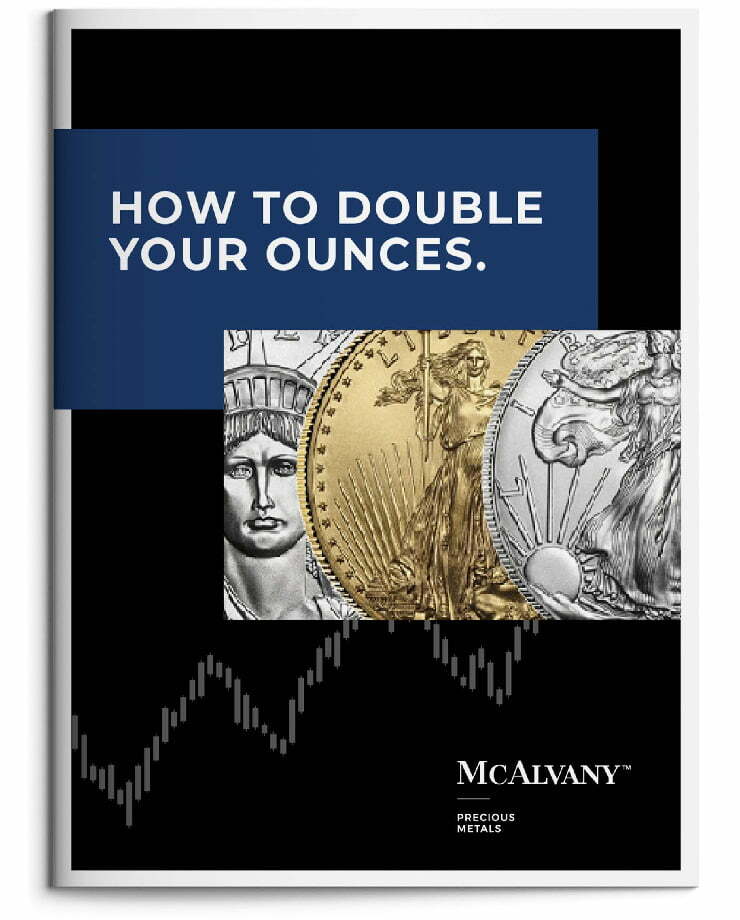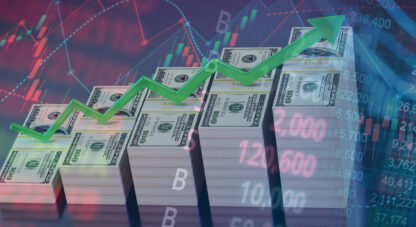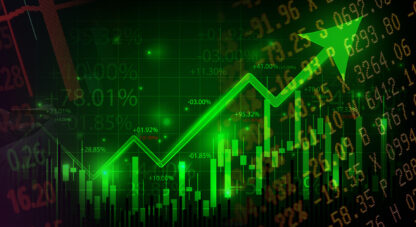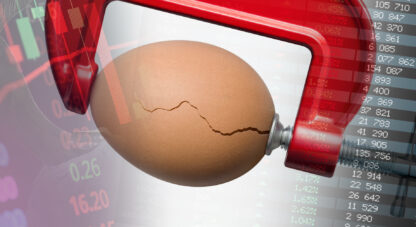“Worse than the worst-case scenario.” “Liberation day,” a day that will live in infamy. Financial Times Editorial Board: “America’s Astonishing Act of Self-Harm.” The catalyst for bursting history’s greatest Bubble was delivered Wednesday on the White House lawn – pomp and circumstance, celebratory propaganda, placards, and disinformation aplenty.
The historic, multi-decade, global Bubble was always going to end badly. The circumstances I see today are worse than what I had previously contemplated as the worst case. It’s difficult to envisage the U.S. more unprepared for what will now unfold – an atrocious backdrop for heading into crisis. Society is angry and so deeply divided – with stocks only somewhat off record highs and unemployment at 4.2%. Washington is at the brink of complete dysfunction.
The existing world order is collapsing. Extraordinary fragmentation and hostility risk great peril. The unfolding global trade war backdrop is uncharted waters. Scenario analysis should now include the possibility of things spiraling out of control over time – prolonged financial crisis, severe economic recession/depression, and even war of the non-trade variety. Financial markets will now factor in myriad extraordinary risks. At the minimum, the unfolding crisis will lack the concerted global response that has been instrumental in calming previous panics.
“S&P 500 Plunges 6% In Worst Rout Since March 2020.” “S&P 500 Ends Week Down 9.1% in Biggest Decline Since March 2020.” “Worst Stock Meltdown Since Covid Deepens as Recession Odds Soar.” “VIX Closes at Highest Since 2020 as Stock Slide Accelerates.” “Wall Street’s Fear Gauge Spikes to Highest Level Since 2020 Covid Crash.” “Junk Bonds Suffer Worst Rout Since 2020 With US Hit Hardest.” “JPMorgan to Goldman Swoon in Worst Two-Day Rout Since Pandemic” “Hedge Funds Hit With Steepest Margin Calls Since 2020 Covid Crisis.”
April 4 – Washington Post (Natalie Allison, Jeff Stein, Cat Zakrzewski and Michael Birnbaum): “Inside and outside the White House, advisers say Trump is unbowed even as the world reels from the biggest increase in trade hostilities in a century. They say Trump is unperturbed by negative headlines or criticism from foreign leaders. He is determined to listen to a single voice — his own — to secure what he views as his political legacy. Trump has long characterized import duties as necessary to revive the U.S. economy, at one point calling tariffs ‘the most beautiful word in the dictionary.’ ‘He’s at the peak of just not giving a f— anymore,’ said a White House official with knowledge of Trump’s thinking. ‘Bad news stories? Doesn’t give a f—. He’s going to do what he’s going to do. He’s going to do what he promised to do on the campaign trail.’”
April 4 – Bloomberg (Catarina Saraiva and Jonnelle Marte): “Federal Reserve Chair Jerome Powell made clear the US central bank won’t rush to react to sweeping Trump administration tariffs, or to the financial market turmoil that has ensued amid fears of a global economic downturn. Tariffs are likely to have a significant effect on the US economy, including slower growth and higher inflation, Powell said Friday at a conference in Virginia. But, he added, Fed officials will wait to gain more clarity on those policies before lowering interest rates. He also emphasized that, with inflation still elevated, the central bank had an obligation to make sure a temporary price boost from tariffs doesn’t turn into something more persistent.”
This is a national crisis. Our unhinged President, too eager to brandish unchecked power, has moved forward with deeply misguided policies that risk sparking that type of financial mayhem that could induce global economic depression. It’s essentially evolving into financial, economic, political, societal, constitutional, and geopolitical crises all melded into one historic quagmire.
Markets have so far reacted similarly to the initial Covid pandemic panic. It took three separate announcements of progressively more massive QE to reverse the unwind of “basis trade” and other speculative leverage. Back in March of 2020, the prospect of imminent economic collapse unleashed unprecedented monetary and fiscal stimulus. Markets quickly reacted to massive QE, with financial collapse and economic depression thwarted.
April 4 – Financial Times (Costas Mourselas, Harriet Agnew and Joshua Franklin): “Hedge funds have been hit with the biggest margin calls since Covid shut down huge parts of the global economy in 2020… Wall Street banks have asked their hedge fund clients to stump up more money as security for their loans because the value of their holdings had tumbled, according to three people familiar… Several big banks have issued the largest margin calls to their clients since the beginning of the pandemic in early 2020. The margin calls underscore the intense turbulence in global markets on Thursday and Friday as Trump’s tariffs announcement was followed by retaliatory duties by China, and other countries readied their own responses.”
There are key aspects of the current environment that point to more formidable risks compared to March 2020. For one, while highly elevated going into the pandemic, speculative leverage has ballooned precariously since 2020. The highly levered “basis trade” is reported to have at least doubled (exceeding $1TN), with growth in “carry trade” and other speculative leverage likely of similar scope. Marketplace liquidity is poised to be a major issue. Historic stock market and AI manias fueled record flows of $1.1 TN into ETFs last year, followed by a quarterly record of $248 billion in Q1 2025. Prolonged manic excess throughout “private Credit” and leveraged lending ensure unprecedented Credit and market vulnerability.
Importantly, inflation is today unanchored and elevated compared to 2020, even before Trump’s historic tariffs. Powell’s Friday comments support the thesis that the Fed will be slower to react to market instability, increasing the likelihood that deleveraging gains problematic momentum before the Fed is forced to provide support. The more deeply deleveraging takes hold, the greater the amount of QE required to thwart financial collapse.
April 4 – Bloomberg (Anna Wong, Estelle Ou, and Nick Hallmark): “In his first public remarks since the March FOMC meeting, Fed Chair Jerome Powell hinted at a more hawkish outlook on inflation and rates – saying the Trump administration’s new tariffs are ‘significantly larger than expected,’ and their inflation impact ‘could be more persistent.’ Notably, Powell never mentioned the recent stock-market plunge or offered any assurance that the Fed is monitoring the sell off.”
We’ll assume President Trump is not hankering to reverse course, while the Fed is clearly not contemplating anything on the scale of a 2020 policy response. It’s also worth noting that it was 15 months between the initial subprime eruption and acute financial crisis in September 2008. The Fed over time escalated its response to weakening growth fundamentals and intensifying market fragility.
“Liberation Day” has unleashed crisis dynamics, with unemployment at 4.2%. Until recently, financial conditions were exceptionally loose, cheap Credit easily available, speculative Bubbles manic, and economic fundamentals seemingly robust. “American exceptionalism” was accepted as an indisputable fact. The “Fed put” is today unusually ambiguous. Unless the Fed is focused specifically on the potential for highly destabilizing speculative deleveraging, there is little that would point to imminent aggressive rate cuts, let alone a massive QE response.
I could be proven wrong on this. What most believe are robust financial and economic structures, I view as fragile. And how this debate plays out will be of monumental importance. My analytical framework is unequivocal: Nothing short of historic Credit and speculative Bubbles, along with a “Bubble economy.” I have argued that the “Roaring Twenties” period offers the closest parallels. Today’s market structure, with hundreds of trillions of derivatives, dynamic hedging strategies that risk self-amplifying “flash crash” selling, $11 TN of ETFs, record household stock exposure, unprecedented indebtedness, and Bubbles in stocks, Credit and crypto – create unprecedented fragility.
Meanwhile, economic structure has been made fragile by decades of boom-time resource misallocation, malinvestment, unending fiscal and trade deficits, and the proliferation of uneconomic enterprises dependent on loose conditions and inflating asset markets.
The risk of major deleveraging unleashing disorderly financial and economic crises is elevated, an assertion corroborated in the markets Thursday and Friday. Deleveraging was a global dynamic, with the U.S. the irrefutable epicenter.
U.S. High yield CDS (Credit default swap) prices surged 51 Thursday and Friday to 339 bps, the largest two-day gain since the March 2023 banking crisis (10th and 13th). CDS spiked 67 bps for the biggest weekly jump since June 2020. High yield CDS spiked 124 bps over the past month.
In a market move the must cause shudders across Wall Street, high yield spreads to Treasuries posted a two-session widening of 93 bps, the largest since March 2020 (20th and 23rd). This week’s spread widening (87bps) was the most since the week of March 20, 2020. Spreads widened 135 bps over the past month. Spreads blowing out is indicative of the panicked unwind of levered “carry trades.”
April 4 – Bloomberg (Aaron Weinman): “It was one of the darkest weeks for US leveraged loans this decade, with prices slumping in both the primary and secondary markets and potential borrowers standing on the sidelines, as global markets were roiled by President Donald Trump’s tariff plan.”
Leveraged loans prices sank 114 bps Thursday and Friday (to 95.01), the largest two-day drop back to March 2020 (23rd and 24th) – to the lowest level since November 2023. For good reason, the stocks of major “private Credit” players were under intense pressure, including two-day drops of 23.3% at KKR, 23.2% at Apollo Global Management, 23.6% at Ares Management 23.6%, and 15.3% at Blackstone.
Unless extreme policy, financial and economic uncertainties swiftly abate, “subprime” Bubble deflation will be irreversible. Manic “private Credit” and leveraged lending booms will succumb, as risky lending always does, to the downside of the Credit cycle. A most protracted and extreme cycle portends deep financial and economic consequences.
An abrupt tightening of financial conditions will have profoundly negative effects on the tech/AI Bubble. Losses this week included Micron 26.8%, Microchip Technology 25.6%, Dell 22.4%, Marvell Technology 20.3%, ARM Holdings 18.6%, Lam Research 18.6%, and Analog Devices 18.3%. Nvidia dropped 14.0%, Apple 13.6%, Meta Platforms 12.5%, Amazon 11.3%, Tesla 9.2%, Alphabet 5.7%, and Microsoft 5.0%. Bloomberg’s MAG7 Index sank 10.1% this week, increasing one-month losses to 15.8%.
Acute Credit stress and collapsing technology stocks portend serious systemic issues. The KBW Bank Index fell 13.8% this week, and the Broker/Dealers lost 12.1%. Citigroup sank 17.4% and Bank America dropped 16.6%. Goldman Sachs CDS surged 20 bps this week (to 86bps), the largest weekly gain since March 2020.
It was a slaughter for global bank stocks. Japan’s TOPIX Bank Index sank 20.2%, and Europe’s STOXX 600 Banks Index fell 13.9%. An index of Italian bank stocks dropped 15.9%.
In general, global de-risking/deleveraging attained powerful momentum Thursday and Friday. Over two sessions, the S&P500 plunged 10.5%, and the Nasdaq100 dropped 11.2%. For the week, Japan’s Nikkei 225 Index was pummeled 9.0%. Major indices were down 10.5% in Italy, 10.1% in Sweden, 9.3% in Switzerland, 8.1% in France and Germany, and 7.0% in the UK.
Asian losses included Vietnam 8.1%, Taiwan and Thailand 4.3%, South Korea 3.6%, India 2.9%, and China (CSI 300) 1.8%. Market drops in Latin America included Argentina 12.6%, Peru 6.5%, Brazil 3.5%, Chile 2.5%, and Mexico 3.2%.
Commodity markets were slammed, as deleveraging, an abrupt tightening of financial conditions, and the likelihood of an unfolding global growth shock sparked panic liquidations. In two sessions, crude sank 13.6%, copper and silver 12.7%, platinum 7.4%, and gold 3.1%.
The “commodity currencies” were under notable selling pressure. Over two sessions, the Australian dollar sank 4.1%, the Norwegian krone 3.3%, the Brazilian real 3.1%, the New Zealand dollar 2.6%, the South African rand 1.3%, and the Mexican peso 1.2%. Meantime, safe haven currencies outperformed, as the Swiss franc gained 2.3%, the Japanese yen 1.6%, and the euro 1.0%. In EM, the Brazilian real dropped 3.1%, the Colombian peso 2.8%, Chilean peso 2.4%, the Mexican peso 1.2%, and the Polish zloty 1.2%. Losses were larger versus the yen, an issue for levered “carry trades.” EM bonds underperformed.
In two sessions, two-year Treasury yields sank 21 bps to 3.86%. Market pricing for the June 18th Fed funds rate dropped 17 bps to 3.98% (35bps of rate reduction expected) – and the December 10th rate sank 25 bps to 3.31% (implying 102bps of rate reduction). Government yields sank 25 bps in Japan, 22 bps in New Zealand, 21 bps in Australia, 19 bps in the UK, and 14 bps in Germany.
“Let Donald Trump run the global economy. He knows what he’s doing. He’s been talking about it for 35 years. You got to trust Donald Trump in the White House. That’s why they put him there. Let him fix it, okay. It’s broken. Let him fix it. Our $36 trillion deficit is going to ruin our children’s lives and our grandchildren’s lives. Let Donald Trump fix the American economy.”
“Let the dealmaker make his deals, when and only if these countries can change everything about themselves – which I doubt they will… Negotiate is talking. No talking. Doing. These countries have abused us and exploited us, as [the President] said yesterday. They need to change their ways. Let’s see them change their ways. It’s going to be a long time. Let’s see what they do. Not talking. Talking is nonsense.” Commerce Secretary Howard Lutnick (Pamela Brown interview, CNN, April 3, 2025)
It’s unAmerican to have such incredible power left unchecked in a single individual. Truth be told, few are willing to trust President Trump to “run the global economy.” This is a reckless gamble. The President has pushed our great nation to the edge – approaching the precipice. Our disrespected longtime friend and ally Canada won’t be talking us off the ledge. Ditto for “PATHETIC” Europe. Xi Jinping simply can’t believe his miraculous good fortune. His archenemy has stupidly gone off and left itself incredibly vulnerable – exposed and defenseless. China certainly won’t be coming to draw Trump away from the ledge. More likely, it’s a nudge.
April 4 – Bloomberg (Josh Xiao and James Mayger): “China retaliated against Donald Trump’s latest tariffs with commensurate levies on all American goods and export controls on rare earths, dealing a fresh blow to global markets… President Xi Jinping’s government will impose a 34% tariff on all imports from the US starting April 10… Authorities in Beijing also announced other measures including: Immediately restrict exports of seven types of rare earths. Launch anti-dumping probe into medical CT X-ray tubes from the US and India. Halt imports of poultry products from two American companies. Add 11 American defense companies to an unreliable entity list. Impose export controls on 16 US firms. Halt imports of sorghum from a US company. Investigate DuPont China for suspected antitrust violations.”
Truth Social: “CHINA PLAYED IT WRONG, THEY PANICKED – THE ONE THING THEY CANNOT AFFORD TO DO!”
Especially after Hegseth’s “warrior ethos” Asian trip last week, China is more than ready to play hardball. President Trump is behaving like a poker player looking at his big pile of chips and thinking he can mindlessly place big bets and force the other players to throw in their cards – while failing to recognize that his stack is made up of $10 chips and not $100s. It became rather conspicuous this week that a fragile U.S. has a tremendous amount to lose. This is understood by China and others.
Unfortunately, we need to prepare for the President to double-down with more bad bets.
Truth Social: “This would be a PERFECT time for Fed Chairman Jerome Powell to cut Interest Rates. He is always “late,” but he could now change his image, and quickly. Energy prices are down, Interest Rates are down, Inflation is down, even Eggs are down 69%, and Jobs are UP, all within two months – A BIG WIN for America. CUT INTEREST RATES, JEROME, AND STOP PLAYING POLITICS!”
It’s difficult to envisage a more troublesome backdrop for the bursting of history’s greatest Bubble. Worse than the worst-case.
For Posterity:
April 3 – Financial Times (Editorial Board): “If it endures, Donald Trump’s decision on April 2 2025 to enact sweeping ‘reciprocal’ tariffs on US trade partners will go down as one of the greatest acts of self-harm in American economic history. They will wreak untold damage on households, businesses and financial markets across the world, upending a global economic order that America benefited from and helped to create. The president spoke brazenly from the Rose Garden at the White House…, delivering a protectionist agenda well beyond most analysts’ worst-case scenarios. Within a week, the US will be enclosed by a minimum 10% tariff wall on all imports, reinforced by hefty individualised duties on nations with sizeable US trade deficits. These build on levies already announced by the administration, including on China, Mexico, Canada and the auto industry. The combined effect will lift America’s effective tariff rate to its highest in over a century.”
April 2 – Wall Street Journal (Jasmine Li): “Sen. Cory Booker broke the Senate talkathon record that stood for decades on Tuesday, speaking on the floor for 25 hours and five minutes without rest to protest President Trump’s actions in his second term. ‘These are not normal times in America, and they should not be treated as such,’ Booker said as he began at 7 p.m. Monday. Booker pledged to take the floor for as long as he was physically able, pushing through with the help of a rotating cast of Democratic colleagues to set a new mark around 7:20 p.m. Tuesday. Booker remained standing at his desk speaking and answering other senators’ questions before he wrapped it up just after 8 p.m. Tuesday. Booker shattered the record for the longest Senate speech, formerly held by Strom Thurmond, the longtime South Carolina senator who filibustered for 24 hours and 18 minutes to oppose the Civil Rights Act of 1957. ‘Over and over, he’s breaking promises and doing outrageous things like disappearing people off American streets,’ Booker said of Trump as he crossed the 17-hour mark. ‘Do we see what’s happening?’”
March 29 – Financial Times (David Pilling): “As President Donald Trump tests US democratic norms and weakens Washington’s commitment to long-standing allies, would-be autocrats the world over have taken heart. Whether it is Israeli Prime Minister Benjamin Netanyahu’s more aggressive offensive in Gaza, President Recep Tayyip Erdoğan’s judicial kneecapping of his main rival, or Indonesia’s president and retired army general Prabowo Subianto blurring the line between civilian and military rule, strongmen everywhere are feeling emboldened, according to many academics and foreign policy experts. ‘The US crossing the line into the autocratic camp is a devastating blow for global governance,’ said Nicholas Bequelin, senior fellow at Yale Law School’s Paul Tsai China Center, adding that Trump had a ‘clear preference’ for strongman rule over democratic oversight. ‘Actors think, ‘I could probably get away with what I couldn’t get away with before’,’ Bequelin said. ‘That encourages more adventurism from countries big and small.’”
March 31 – Financial Times (Gideon Rachman): “For decades, American institutions such as the National Endowment for Democracy have tried to teach the world about political liberty. But now the Americans themselves could do with some advice. Analysts from places like Turkey and Russia have seen strongman rule established in their own countries and can see similar patterns playing out in Donald Trump’s America. Alexander Gabuev of the Carnegie Russia Eurasia Center says the ‘conversations I hear among American liberals now remind me of intellectuals in Moscow just after Putin came to power. There is the same sense of bewilderment and deep concern.’ Gabuev’s advice is that Americans who want to defend democracy and the rule of law need to act fast. Every wrongful detention or ignored court ruling is a ‘trial balloon’. If there is no effective pushback, would-be authoritarians will go further and faster.”
For the Week:
The S&P500 sank 9.1% (down 13.7% y-t-d), and the Dow fell 7.9% (down 9.9%). The Utilities slumped 3.8% (up 1.4%). The Banks plunged 13.8% (down 18.2%), and the Broker/Dealers lost 12.1% (down 11.3%). The Transports sank 9.8% (down 17.2%). The S&P 400 Midcaps fell 9.1% (down 15.1%), and the small cap Russell 2000 dropped 9.7% (down 18.1%). The Nasdaq100 sank 9.8% (down 17.2%). The Semiconductors plunged 16.0% (down 27.8%). The Biotechs fell 7.0% (down 7.6%). With bullion declining $46, the HUI gold index dropped 9.3% (up 18.2%).
Three-month Treasury bill rates ended the week at 4.1425%. Two-year government yields sank 26 bps to 3.65% (down 59bps y-t-d). Five-year T-note yields dropped 27 bps to 3.71% (down 67bps). Ten-year Treasury yields fell 26 bps to 3.99% (down 57bps). Long bond yields dropped 22 bps to 4.41% (down 37bps). Benchmark Fannie Mae MBS yields declined 18 bps to 5.35% (down 49bps).
Italian 10-year yields declined eight bps to 3.77% (up 25bps y-t-d). Greek 10-year yields fell 10 bps to 3.44% (up 23bps). Spain’s 10-year yields declined nine bps to 3.27% (down 21bps). German bund yields sank 15 bps to 2.58% (up 21bps). French yields fell 10 bps to 3.33% (up 14bps). The French to German 10-year bond spread widened five to 75 bps. U.K. 10-year gilt yields sank 25 bps to 4.45% (down 12bps). U.K.’s FTSE equities index slumped 7.0% (down 1.4% y-t-d).
Japan’s Nikkei 225 Equities Index dropped 9.0% (down 15.3% y-t-d). Japanese 10-year “JGB” yields sank 33 bps to 1.22% (up 12bps y-t-d). France’s CAC40 lost 8.1% (down 1.4%). The German DAX equities index slumped 8.1% (up 3.7%). Spain’s IBEX 35 equities index dropped 6.7% (up 7.1%). Italy’s FTSE MIB index sank 10.6% (up 1.4%). EM equities were under pressure. Brazil’s Bovespa index dropped 3.5% (up 5.8%), and Mexico’s Bolsa index slumped 3.2% (up 3.9%). South Korea’s Kospi fell 3.6% (up 2.7%). India’s Sensex equities index lost 2.6% (down 4.0%). China’s Shanghai Exchange Index slipped 0.3% (down 0.3%). Turkey’s Borsa Istanbul National 100 index fell 2.9% (down 4.6%).
Federal Reserve Credit declined $16.3 billion last week to $6.687 TN. Fed Credit was down $2.214 TN from the June 22, 2022, peak. Over the past 290 weeks, Fed Credit expanded $2.961 TN, or 79%. Fed Credit inflated $3.876 TN, or 138%, over the past 647 weeks. Elsewhere, Fed holdings for foreign owners of Treasury, Agency Debt declined $3.9 billion last week to $3.293 TN. “Custody holdings” were down $52.1 billion y-o-y, or 1.6%.
Total money market fund assets added $17.6 billion to a record $7.032 TN. Money funds were up $897 billion over 36 weeks (21.1% annualized) and $991 billion y-o-y (16.4%).
Total Commercial Paper increased $2.9 billion to $1.395 TN – the high back to 2009. CP has expanded $307 billion y-t-d and $58 billion, or 4.3%, y-o-y.
Freddie Mac 30-year fixed mortgage rates slipped a basis point this week to 6.64% (down 18bps y-o-y). Fifteen-year rates fell seven bps to 5.82% (down 24bps). Bankrate’s survey of jumbo mortgage borrowing costs had 30-year fixed rates down one basis point to 6.78% (down 56bps).
Currency Watch:
For the week, the U.S. Dollar Index declined 1.0% to 103.023 (down 5.0% y-t-d). For the week on the upside, the Swiss franc increased 2.3%, the Japanese yen 2.0%, the euro 1.2%, the Canadian dollar 0.7%, the South Korean won 0.5%, and the Swedish krona 0.1%. On the downside, the Australian dollar declined 3.9%, the South African rand 3.7%, the Norwegian krone 2.6%, the New Zealand dollar 2.1%, the Brazilian real 1.4%, the Singapore dollar 0.4%, the British pound 0.4%, and the Mexican peso 0.3%. The Chinese (onshore) renminbi declined 0.27% versus the dollar (up 0.24% y-t-d).
Commodities Watch:
The Bloomberg Commodities Index was hit 5.8% (up 0.9% y-t-d). Spot Gold declined 1.5% to $3,038 (up 15.8%). Silver sank 13.3% to $29.5855 (up 2.4%). WTI crude sank $7.37, or 10.6%, to $61.99 (down 13.6%). Gasoline lost 8.1% (up 2%), and Natural Gas fell 5.6% to $3.837 (up 6%). Copper sank 14.2% (up 9%). Wheat was little changed (down 4%), while Corn gained 1.5% (unchanged). Bitcoin lost $300, or 0.4%, to $83,720 (down 10.7%).
Trump Administration Watch:
April 3 – Financial Times (Edward Luce): “Donald Trump once said that tariff was the most beautiful word. After the markets closed on Wednesday, he declared ‘liberation day’ in its honour. To America’s trading partners, April 2 will mark the end of a global trading era. Trump has elevated tariffs to rates last seen after passage of the infamous Smoot-Hawley Act in the Great Depression. To US consumers, liberation day spells higher prices. But to Trump it was fulfilment of a life-long ambition to declare economic war on the foreign ‘cheaters’ and ‘scavengers’ who for decades had ‘looted’, ‘raped’, ‘plundered’ and ‘pillaged’ America. Tell us what you really think, Mr President.”
April 3 – Wall Street Journal (Nick Timiraos): “The U.S. is moving to blow up the global trading order it built, ushering in an uncertain new era. President Trump’s highly anticipated announcement… represents a high-stakes gamble to transform a global economic relationship that Trump for decades has said ripped off the U.S.—even as the American economy had emerged from the pandemic as the envy of its rich-world peers. The president’s moves raise the specter of a stagflationary shock that increases prices while putting more economies, including the U.S., at risk of recession. Trump stunned markets by announcing a suite of tariff hikes on major trading partners, including 20% for the European Union and 34% on China. The tax on imported goods, which also includes at least a 10% across-the-board increase on all countries, will raise overall weighted-average tariffs to 23%—the highest in over 100 years—from 10% before the announcement and 2.5% last year, according to JPMorgan Chase.”
March 30 – NBC (Peter Nicholas and Sahil Kapur): “Moving at a rapid-fire clip, Donald Trump has been concentrating power in his hands, pushing the bounds of executive authority while effectively muzzling an array of voices that pose threats to his agenda. Trump is using the multiple levers that a president commands both to neuter institutions he has scorned and reward others that align with his worldview. One by one, he is bending ostensibly independent actors under the weight of his power. So far, Trump has targeted the legal community, universities, the arts, career government employees and the press and brought them to heel in some measure, willingly or not. Law firms with even indirect ties to past investigations of Trump now face punitive measures that could put them out of business.”
April 4 – Reuters (Bo Erickson): “Republican U.S. Senator Chuck Grassley introduced a bill on Thursday that would require congressional approval for new tariffs, the day after President Donald Trump unveiled sweeping new taxes on a vast array of imported goods. Grassley, whose home state of Iowa relies heavily on the global agricultural trade, joined Democratic Senator Maria Cantwell of Washington for the “Trade Review Act of 2025” which would require Congress to sign off on new tariffs within 60 days of their imposition or automatically block their enforcement.”
April 2 – Bloomberg (Alicia Diaz): “Republican senators were forced late Wednesday to do something they’ve avoided: take a public stand on the trade war President Donald Trump is instigating. The Senate passed a Democratic resolution taking aim at his earlier tariffs on Canada… The vote was 51-48, with four Republicans joining all Democrats voting in favor. While the resolution had just enough Republican defectors to pass, it’s unlikely to force Trump to change his ways. Trump has promised he would veto it even if House Republican leaders were to permit a vote in their chamber.”
April 2 – Washington Post (Lisa Rein, Michael Birnbaum, Natalie Allison and Jeff Stein): “The White House is preparing an estimate of what it would cost the federal government to control Greenland as a territory, according to three people with knowledge…, the most concrete effort yet to turn President Donald Trump’s desire to acquire the Danish island into actionable policy. While Trump’s demands elicited international outrage and a rebuke from Denmark, White House officials have in recent weeks taken steps to determine the financial ramifications of Greenland becoming a U.S. territory, including the cost of providing government services for its 58,000 residents, the people said.”
April 3 – CNBC (Kevin Breuninger): “Trump said the response to his staggering new tariff plan is ‘going very well.’ ‘The markets are going to boom, the stock is going to boom, the country is going to boom,’ he told reporters… ‘The rest of the world wants to see, is there any way they can make a deal?’ he said. Trump pointed to investment pledges that some companies have made in recent weeks, claiming that it totals almost $7 trillion. ‘You’ll see how it’s going to turn out. Our country is going to boom,’ he said.”
April 3 – Bloomberg (Kate Sullivan): “Vice President JD Vance sought to cast a global rout in stocks as a temporary pain as the White House downplayed the immediate effects of President Donald Trump’s tariff agenda. ‘I frankly thought in some ways it could be worse in the markets, because this is a big transition,’ Vance said in an interview with Newsmax. ‘You saw the President said earlier today, it’s like a patient who was very sick, we did the operation, and now it’s time to make the patient better. And that’s exactly what we’re doing.’”
April 3 – Wall Street Journal (Alexander Ward, Meridith McGraw and Josh Dawsey): “Several National Security Council staffers were fired this week…, as right-wing conspiracy theorist Laura Loomer alleged to President Trump that some members of his administration weren’t aligned with his priorities. Four NSC aides were fired overnight, the people said. Two other NSC aides were let go on Sunday… The staffers worked on a series of portfolios, including intelligence, India, congressional affairs and the impact of technology security, the people said.”
March 31 – Associated Press (Scott Bauer and Thomas Beaumont): “Elon Musk gave out $1 million checks on Sunday to two Wisconsin voters, declaring them spokespeople for his political group, ahead of a Wisconsin Supreme Court election that the tech billionaire cast as critical to President Donald Trump’s agenda and ‘the future of civilization.’ ‘It’s a super big deal,’ he told a roughly 2,000-person crowd in Green Bay… ‘I’m not phoning it in. I’m here in person.’ Musk and groups he supports have spent more than $20 million to help conservative favorite Brad Schimel in Tuesday’s race…”
Constitution Watch:
March 29 – Associated Press (Mark Sherman and Lindsay Whitehurst): “As losses mount in lower federal courts, President Donald Trump has returned to a tactic that he employed at the Supreme Court with remarkable success in his first term. Three times in the past week, and six since Trump took office a little more than two months ago, the Justice Department has asked the conservative-majority high court to step into cases much earlier than usual. The administration’s use of the emergency appeals, or shadow docket, comes as it faces more than 130 lawsuits over the Republican president’s flurry of executive orders. Many of the lawsuits have been filed in liberal-leaning parts of the country as the court system becomes ground zero for pushback to his policies.”
April 2 – Wall Street Journal (Alexander Ward, Michelle Hackman and Vera Bergengrue): “The Trump administration is pursuing agreements with several more countries to take migrants deported from the U.S., according to officials familiar… Immigration officials are seeking more destinations where they can send immigrants the U.S. wants to deport, but whose countries are slow to take them back or refuse to. Their desired model builds on a one-time deal the administration struck with Panama in February, under which they sent a planeload of over 100 migrants, mostly from the Middle East, to the Central American nation. Panama then detained the migrants and worked to send them to their home countries.”
Trade War Watch:
April 2 – Wall Street Journal (Editorial Board): “President Trump unveiled his new ‘liberation day’ tariffs…, and they are another large step toward a new old era of trade protectionism. Assuming the policy sticks—and we hope it doesn’t—the effort amounts to an attempt to remake the U.S. economy and the world trading system… Mr. Trump’s tariffs look ‘reciprocal’ in name only. First he’s hitting every nation in the world with a 10% ‘baseline’ tariff to sell in the U.S. market. For those he calls ‘bad actors,’ he’s adding up the country’s tariff rate on U.S. goods, plus an arbitrary estimate of the cost of its ‘currency manipulation’ and non-tariff barriers. He then takes that total number and applies half of that in tariffs on the country’s exports to the U.S. He’s hitting China with a 34% tariff, but our Japanese friends will pay nearly as much at 24%. The European Union gets whacked with 20%, India with 26%.”
April 2 – Wall Street Journal (Jason Douglas and Tom Fairless): “President Trump’s biggest tariff blitz yet sends a clear message to U.S. and foreign companies alike: The era of globalization is over. Trump’s ‘Liberation Day’ plan to impose sweeping new duties on trillions of dollars in imports shows that the White House wants goods sold to American consumers to be built in American factories—bringing down the curtain on U.S. support for the turbocharged globalization that powered the world economy for decades… Trump’s Made-in-America ambitions mean that a gusher of investment that in recent years showered low-cost manufacturing destinations such as Vietnam, as well as U.S. allies such as South Korea and Japan, is set to dry up. Firms are reconsidering their options for where best to spend their investment dollars. ‘The U.S. has been at the center of globalization,’ said Andre Sapir, a former EU official who is now economics professor at the Free University of Brussels. ‘Now the U.S., the center, wants to pull away.’”
April 3 – New York Times (Keith Bradsher): “The 34% tariff announced on Wednesday is in addition to two rounds of import taxes the president already imposed since January. With the new tariffs…, President Trump has now imposed additional tariffs on Chinese goods of 54% — an extremely heavy burden that will cause companies to look elsewhere for suppliers… He Weiwen, a retired Ministry of Commerce official who is now a senior fellow at the Center for China and Globalization, a Beijing research group, said that Mr. Trump’s actions were the biggest violation ever of the rules of the W.T.O. or its predecessor, the General Agreement on Tariffs and Trade. The latest tariffs ‘will not liberate America, but will only cause new suffering to the American economy and American families,’ Mr. He said. China’s official news agency, Xinhua, published an editorial describing the Trump administration’s tariffs as ‘self-defeating bullying,’ and said Washington was ‘turning trade into an over-simplistic tit-for-tat game.’”
April 1 – Axios (Courtenay Brown): “History, they say, may not repeat but it rhymes. America’s periods of high tariffs dating back to the 1800s carry eerie similarities to today’s trade war escalation. The history of post-tariff higher prices and weaker economic conditions offers some perspective for what might happen in the months and years ahead. Tariffs have historically resulted in retaliation, pain for agricultural interests, higher consumer costs, political backlash and currency chaos… ‘Regardless of the era, the consequences of high tariffs and retaliations remain largely the same,’ Andy Polk, senior vice president of the Footwear Distributors and Retailers of America, tells Axios. ‘You could swap the names of the main actors and their quotes, justifications, and politics would remain basically the same.’”
April 3 – Wall Street Journal (Edith Hancock): “European Commission President Ursula von der Leyen vowed to respond to U.S. President Trump’s latest round of levies on foreign imports, calling them ‘a major blow to the world economy.’ ‘The global economy will massively suffer,’ she said… ‘Uncertainty will spiral and trigger the rise of further protectionism. The consequences will be dire.’”
April 3 – Reuters (Ania Nussbaum, Samy Adghirni and Kamil Kowalcze): “France and Germany are pushing for a more robust reaction to US President Donald Trump’s tariff measures, advocating for a forceful retaliation that could strengthen the EU’s negotiating position. French President Emmanuel Macron believes the European Union should be ready to respond with options such as targeting US tech and services, according to people familiar… While France wants to reach a negotiated solution, the government is also pushing for a tougher response. Paris wants to make sure the EU responds with all its instruments to defend EU interests, said one of the people…”
April 3 – Bloomberg (Ania Nussbaum, Jenny Che, and Samy Adghirni): “French President Emmanuel Macron was quick to respond to US President Donald Trump’s punitive tariffs on the European Union by urging businesses in the world’s largest trading bloc to halt spending on the US. ‘What would the message be of having big European players that invest billions in the American economy at the same time they are hitting us,’ Macron said. ‘We must have collective solidarity.’”
March 31 – Politico (Geoffrey Smith): “U.S. President Donald Trump’s imposition of tariffs on the EU should be the start of a ‘march to independence’ for the continent, European Central Bank President Christine Lagarde said… Lagarde said the moment represented a unique opportunity for Europe, and that it should not ‘lie down’ in front of the U.S. onslaught. ‘I consider it a moment when we can decide together to take our destiny into our own hands, and I think it is a march to independence,’ she argued, adding that this applied to the fields of finance and information technology as much as to defense and energy.”
April 1 – Wall Street Journal: “China is seeking to coordinate its response to U.S. tariffs with Japan and South Korea, Chinese state media said…, as the world’s second-largest economy looks to bolster regional economic collaboration. Japanese and Korean officials said there was no decision to coordinate action with Beijing, but said the countries have recently discussed trade issues amid three-way talks over the weekend, the first such dialogue in five years.”
April 2 – Reuters (Padraic Halpin): “U.S. President Donald Trump’s planned tariffs will be negative across the world, with the damage depending on how far they go, how long they last and whether they lead to successful negotiations, European Central Bank head Christine Lagarde said… ‘It will be negative the world over and the density and the durability of the impact will vary depending on the scope, on the products targeted, on how long it lasts, on whether or not there are negotiations,’ Lagarde said… ‘Because let’s not forget quite often those escalations of tariffs, because they prove harmful, even for those who inflict it, lead to negotiation tables where people actually sit down and discuss and eventually remove some of those barriers.’”
April 1 – Bloomberg (Kate Duffy and Oliver Crook): “French hotel group Accor SA warned that forward bookings from Europe to the US this summer are down 25%, as travelers that feel put off by President Donald Trump’s border clampdown divert to other locations. The company is seeing a ‘pretty strong deceleration’ across the Atlantic, Chief Executive Officer Sébastien Bazin said… The expected shortfall is greater than the 18%-20% decline in the first 90 days of the year, he said. Travelers are deciding to visit Canada, South America and Egypt instead, Bazin said.”
April 3 – Bloomberg (Philip J. Heijmans and Antony Sguazzin): “President Donald Trump’s new reciprocal tariffs are set to hit some of the world’s poorest nations the hardest… Cambodia was slapped with Asia’s highest tariff rate of 49% in Trump’s levies… Garment manufacturing giant Bangladesh was hit with a 37% rate, while in Myanmar… the US imposed a 45% duty. The southern African nation of Lesotho received a 50% tariff, the highest of any country. ‘Oh, look at Cambodia, 97%,’ Trump said at the White House, drawing laughter…”
Budget Watch:
March 31 – Wall Street Journal (Editorial Board): “Financial markets have the shakes as President Trump prepares to launch his next big tariff salvo… And nerves are appropriate since Mr. Trump’s chief trade adviser, Peter Navarro, is boasting about what he says will amount to a $6 trillion tax increase from the tariffs. ‘Tariffs are going to raise about $600 billion a year, about $6 trillion over a 10-year period,’ Mr. Navarro told Fox News… This is on top of $100 billion a year from Mr. Trump’s car and truck tariffs. He also tried to claim that ‘the message is that tariffs are tax cuts.’ George Orwell, call your office. In the real economic world, a tariff is a tax.”
April 2 – Wall Street Journal (Richard Rubin): “Senate Republicans rallied behind a fiscal framework that allows more than $5 trillion in tax cuts over a decade, taking a crucial step toward turning President Trump’s agenda—tax cuts, border security and national defense—into law… The plan employs a controversial accounting maneuver, postpones decisions about spending cuts and conflicts with a competing House plan. The Senate is likely to vote on its budget later this week, but key House members are already objecting, warning that the Senate’s approach doesn’t guarantee the deep spending cuts they see as necessary.”
April 1 – Axios (Stef W. Kight): “Senate Republicans are fully embracing the strategy of plowing ahead on President Trump’s ‘one, big beautiful bill’ by bypassing the parliamentarian on a crucial accounting matter. Why it matters: Senate leadership and Trump want to make the 2017 tax cuts permanent without having to account for how much it would add to the deficit. Now, they’re saying all they need is for Budget Chair Lindsey Graham to decide that’s what they’re going to do. Senate Majority Leader John Thune backed the the argument, laid out by Graham, that Republicans don’t need the Senate parliamentarian to bless the current policy approach during Tuesday’s Senate GOP lunch.”
Canada Friend and Ally Watch:
April 3 – Associated Press (Rob Gillies): “Prime Minister Mark Carney said… Canada will match U.S. President Donald Trump’s 25% auto tariffs with a tariff on vehicles imported from the United States. Trump’s previously announced 25% tariffs on auto imports took effect Thursday. The prime minister said he told Trump last week in a phone call that he would be retaliating for those tariffs. ‘We take these measures reluctantly. And we take them in ways that is intended and will cause maximum impact in the United States and minimum impact in Canada,’ Carney said.”
March 31 – Wall Street Journal (Paul Vieira and Ryan Dubé): “In Canada’s escalating feud with the U.S., people here are rallying around the sharp elbows of hockey legend Gordie Howe. Another hockey icon, Wayne Gretzky, is getting an ice-cold shoulder. Raised during the Great Depression on a farm in the Canadian prairies, ‘Mr. Hockey,’ as Howe was known, was quick to throw his elbows up and into an opponent’s chin when confronted on the ice. It was so brutally effective that the right-winger for the Detroit Red Wings earned another nickname: ‘Mr. Elbows.’ Now, Canadians have turned ‘Elbows Up’ into a movement rallying the nation against President Trump and his threats to impose crippling tariffs on the U.S.’s northern neighbor and make it the 51st state.”
March 30 – Bloomberg (Alexey Anishchuk): “Outgoing German Chancellor Olaf Scholz expressed solidarity with Canada to fend off President Donald Trump, who introduced tariffs against the northern neighbor and has repeatedly said it should become part of the US. ‘Canada is not a federal state of anyone. Canada is a proud, independent nation. Canada has friends all over the world – and especially many of them here in Germany and Europe,’ Scholz said… ‘We stand by your side.’”
March 31 – Politico (Mike Blanchfield): “The return of Donald Trump has forced a reckoning in Canada with the potential to reshape the Canadian economy — including the direction its energy flows. ‘We will need to do things previously thought impossible, at speeds we haven’t seen in generations,’ Prime Minister Mark Carney said last week as he declared Canada’s traditional economic relationship with the United States ‘over.’ During his first week in office, Carney gathered Canada’s premiers and got them to agree that in the face of Trump’s tariffs, they will remove all internal trade barriers by Canada Day on July 1.”
April 3 – Bloomberg (Ari Altstedter): “Toronto home sales plunged in March as economic anxiety over tariff tensions between Canada and the US caused buyers to pull back. Transactions in Canada’s largest city dropped 23% from a year earlier to just over 5,000 units, according… the Toronto Regional Real Estate Board…”
New World Disorder Watch:
March 31 – BBC (Sarah Rainsford): “A missile launcher sends a cloud of brown dust into the air as it hurtles across a field towards the firing line. Moments later comes a soldier’s countdown, from five to ‘Fire!’, before a rocket roars into the sky. The blasts and booms from such military training exercises are so constant that locals in the nearby small town of Munster barely notice anymore. But life here is set to get even louder. Germany’s military… recently got the all-clear for a massive increase in investment after parliament voted to exempt defence spending from strict rules on debt. The country’s top general has told the BBC the cash boost is urgently needed because he believes Russian aggression won’t stop at Ukraine. ‘We are threatened by Russia. We are threatened by Putin. We have to do whatever is needed to deter that,’ Gen Carsten Breuer says. He warns that Nato should be braced for a possible attack in as little as four years. ‘It’s not about how much time I need, it’s much more about how much time Putin gives us to be prepared,’ the defence chief says bluntly. ‘And the sooner we are prepared the better.’”
Ukraine War Watch:
March 29 – Politico (Camille Gus): “Ukraine will not accept a minerals agreement with the United States that would jeopardize its accession to the European Union, Ukrainian President Volodymyr Zelenskyy said… ‘The Constitution of Ukraine clearly states that our course is towards the EU… There are very important reforms and corresponding steps,’ Zelenskyy told a press conference… ‘Nothing that could endanger… Ukraine’s accession to the EU can be accepted,’ he said… The Ukrainian president confirmed that Kyiv had officially received a new draft of the proposed deal from Washington, which included ‘many new provisions that were not previously discussed,’ as well as ‘some aspects that had already been rejected by both sides,’ according to Ukrainian media.”
March 30 – NBC (Kristen Welker and Megan Lebowitz): “President Donald Trump said he was ‘very angry’ and ‘pissed off’ when Russian President Vladimir Putin criticized the credibility of Ukrainian President Volodymyr Zelenskyy’s leadership, adding that the comments were ‘not going in the right location.’ Agence France-Presse reported that Putin… called for a transitional government to be put in place in Ukraine… ‘If Russia and I are unable to make a deal on stopping the bloodshed in Ukraine, and if I think it was Russia’s fault — which it might not be — but if I think it was Russia’s fault, I am going to put secondary tariffs on oil, on all oil coming out of Russia,’ Trump said… ‘That would be that if you buy oil from Russia, you can’t do business in the United States… There will be a 25% tariff on all oil, a 25- to 50-point tariff on all oil.’”
March 31 – Associated Press: “Russia views efforts to end its three-year war with Ukraine as ‘a drawn-out process,’ a Kremlin spokesman said…, after U.S. President Donald Trump expressed frustration with the two countries’ leaders as he tries to bring about a truce. ‘We are working to implement some ideas in connection with the Ukrainian settlement. This work is ongoing,’ Dmitry Peskov said… ‘There is nothing concrete yet that we could and should announce. This is a drawn-out process because of the difficulty of its substance,’ the Kremlin spokesman said…”
Middle East Watch:
April 1 – Bloomberg (Natalia Drozdiak): “US Defense Secretary Pete Hegseth has ordered additional forces to the Middle East, including the Carl Vinson carrier strike group and aircraft, as Washington vows to continue its strikes against Iran-backed Houthi rebels and as tensions with Tehran increase over its nuclear program. The Carl Vinson will arrive in the region after completing exercises in the Indo-Pacific. The department is also prolonging the Harry S. Truman carrier strike group’s deployment in the region, Pentagon spokesman Sean Parnell said… The unusual two-carrier presence repeats a show of force by the Biden administration last year. ‘Secretary Hegseth continues to make clear that, should Iran or its proxies threaten American personnel and interests in the region, the United States will take decisive action to defend our people,’ Parnell said.”
April 1 – Wall Street Journal (Nancy A. Youssef, Michael R. Gordon and Benoit Faucon): “The Pentagon is rapidly expanding its forces in the Middle East as the U.S. military continues airstrikes against Houthi militants in Yemen and steps up its pressure on Iran, the Defense Department said… President Trump has threatened in recent days to bomb Iran if Tehran doesn’t make a deal to roll back its nuclear program. But two officials said that the aim of the additional forces is to bolster the U.S. campaign in Yemen and deter Iran… The buildup includes F-35 combat jets, which are joining B-2 bombers and Predator drones in the region, according to U.S. officials familiar with the planning. The U.S. will soon have two carrier strike groups in the region…”
U.S./Russia/China/Europe/Iran Watch:
April 1 – Bloomberg: “China’s top diplomat called on the US to remove tariffs it imposed on Chinese goods for Beijing’s alleged role in America’s fentanyl crisis before holding any talks on the matter, deepening a stalemate weighing on trade ties between the world’s two largest economies. ‘If the US side really wants to solve the fentanyl problem, then it should cancel the unjustified tariff increase and engage in equal consultation with the Chinese side,’ Chinese Foreign Minister Wang Yi said in an interview with Russian state-run news service RIA Novosti… ‘If the US side persists in exerting pressure and even continues to engage in blackmail, China will resolutely counteract it,’ Wang said…”
March 30 – Bloomberg (Alastair Gale): “Defense Secretary Pete Hegseth said the US military has begun to upgrade its operations in Japan to a new ‘war-fighting’ command, highlighting the Trump administration’s focus on China as its primary security challenge. In Tokyo, the final stop on a swing through the Asia-Pacific region…, the secretary said the US would deepen its defense coordination with Japan. ‘America and Japan stand firmly together in the face of aggressive and coercive actions by the communist Chinese,’ he said, speaking after a meeting with Japanese Defense Minister Gen Nakatani.”
March 28 – Financial Times (Chan Ho-him, Cheng Leng, Kaye Wiggins, and Eric Platt): “China’s antitrust regulator has said it will review the sale of two ports on the Panama Canal by Hong Kong’s CK Hutchison to a consortium led by BlackRock, adding to uncertainty around the geopolitically sensitive deal. The planned sale is part of a $22.8bn deal for 43 ports around the world, which has sparked criticism from China, with CK Hutchison having already been warned to ‘think twice’ about selling to a group that includes US investors BlackRock and Global Infrastructure Partners.”
March 30 – Bloomberg (Arsalan Shahla): “Iran has told US President Donald Trump it won’t engage in direct negotiations with his administration, Iranian President Masoud Pezeshkian said in televised remarks. Pezeshkian said the decision was conveyed in Supreme Leader Ayatollah Ali Khamenei’s response to a letter Trump had sent earlier this month on the prospect of new talks over Tehran’s nuclear program. He said Iran’s response also indicated that indirect communication with the US would remain a possibility, as it had in the past. ‘They must prove that they can build trust regarding their decisions, and I hope this will happen,’ Pezeshkian said. ‘It’s the behavior of the Americans that determines the future path of negotiations.’”
March 31 – Reuters (Tom Little): “Greenland will strengthen its ties with Denmark until it can become a sovereign nation, the Arctic island’s incoming prime minister told Reuters…, noting that the semi-autonomous Danish territory ultimately wants to become independent. Jens-Frederik Nielsen, 33, was sworn in as prime minister of Greenland on Friday and will lead a four-party coalition government amid challenges posed by U.S. President Donald Trump’s ambitions to control the island.”
March 31 – New York Times (Yan Zhuang): “The United States will not take control of Greenland, the island’s new prime minister said… in response to President Trump’s latest assertion that he wants to annex the territory. ‘President Trump says that the United States ‘will get Greenland,’’ Prime Minister Jens-Frederik Nielsen, who was sworn in on Friday, said… ‘Let me be clear: The United States will not get it. We do not belong to anyone else. We decide our own future’… Mr. Trump had told NBC News: ‘We’ll get Greenland. Yeah, 100%’… Mr. Trump said he ‘absolutely’ had had real conversations about annexing the icebound island, a semiautonomous territory that has been connected to Denmark for more than 300 years. While there was a ‘good possibility that we could do it without military force,’ Mr. Trump added, ‘I don’t take anything off the table.’”
March 29 – Associated Press (Philip Crowther, Kirsten Grieshaber and Aamer Madhani): “The Danish foreign minister on Saturday scolded the Trump administration for its ‘tone’ in criticizing Denmark and Greenland, saying his country is already investing more into Arctic security and remains open to more cooperation with the U.S… ‘Many accusations and many allegations have been made. And of course we are open to criticism,’ Rasmussen said… ‘But let me be completely honest: we do not appreciate the tone in which it is being delivered. This is not how you speak to your close allies. And I still consider Denmark and the United States to be close allies.’”
March 31 – Reuters (Clare Jim): “A pro-Beijing Hong Kong newspaper stepped up criticism of CK Hutchison’s deal to sell its Panama ports to a BlackRock-led group, sending its shares lower on Monday, as sources said the transaction, due to be signed by April 2, would be delayed. The deal has become highly politicised as the Hong Kong conglomerate is thrust into the cross-hairs of an escalating China-U.S. trade war that has deepened concerns the financial hub’s edge will erode further amid geopolitical tensions.”
Taiwan Watch:
April 2 – Associated Press (Christopher Bodeen and Johnson Lai): “China conducted military drills around Taiwan for a second day…, focusing on the Taiwan Strait — a crucial conduit for international trade separating the self-governing island democracy from China. The Strait Thunder-2025A drills were held in the middle and southern areas of the strait, a People’s Liberation Army spokesperson said. Taiwan’s military said that it was closely monitoring the drills… The latest exercises ‘focus on subjects of identification and verification, warning and expulsion, and interception and detention so as to test the troops’ capabilities of area regulation and control, joint blockade and control, and precision strikes on key targets,’ Eastern Theater Command spokesperson Shi Yi was quoted as saying…”
April 1 – Telegraph: “China has depicted Taiwan’s president as a cartoon bug while launching large-scale military exercises around the island to ‘serve as a stern warning and powerful deterrent’ against its independence. Beijing’s military said the army, navy and rocket force drills would focus on ‘seizing comprehensive control’ of Taiwan, before releasing a video branding Lai Ching-Te, its president, as a ‘parasite’. The footage shared by China’s Eastern Theater Command showed Mr Lai as a green insect who appears to give birth to other insects, before being held by chopsticks above a burning Taiwan.”
March 29 – Wall Street Journal (Jonathan Cheng, Joyu Wang, and Alexander Ward): “The Trump administration is bolstering hopes in Taiwan for increased support for the island, after months of uncertainty about whether President Trump’s ‘America First’ agenda could deprive it of a key backer. In recent days, the U.S. made its first move to cut off Chinese access to high-end technology and hardened its wording in a pair of public statements on Taiwan in ways that are certain to rankle Beijing”
April 2 – CNBC (Anniek Bao): “The U.S… reaffirmed its commitment to supporting Taiwan as China extended to a second day its large-scale military exercises off the coast of the democratically governed island. ‘In the face of China’s intimidation tactics and destabilizing behavior, the United States’ enduring commitment to our allies and partner, including Taiwan, continues,’ Tammy Bruce, U.S. Department of State spokesperson said… China’s army, navy and rocket forces on Tuesday launched a joint exercise, with the military describing it as a ‘stern warning’ against forces looking to undermine peace in the Taiwan Strait. ‘China’s aggressive military activities and rhetoric toward Taiwan only serve to exacerbate tensions and put the region’s security and the world’s prosperity at risk,’ the State Department said…”
Market Instability Watch:
March 30 – Bloomberg (Alice Atkins): “In the world’s busiest financial market, the one which sets the terms of trade between every economy on Earth, major players can sense a flaw with the potential to create a system-wide crisis. The only trouble is they can neither see nor prove it — and likely won’t be able to until it’s too late. The global arena for foreign exchange appears on the surface to be a giant pool of cash in constant churn, generating $7.5 trillion of transactions per day — more than all other major asset classes combined. But lately key names from the industry including the likes of Citigroup Inc., Deutsche Bank AG and XTX Markets Ltd. have begun to fret about just how deep the pool really is. They fear a proliferation of trading platforms and the widespread use of automation are creating the illusion of market depth, while a retreat of big institutions has actually drained liquidity away.”
April 3 – Bloomberg (Jeran Wittenstein, Carmen Reinicke and Matthew Griffin): “Roughly $2.5 trillion was erased from the S&P 500 Index on Thursday amid worries that President Donald Trump’s sweeping new round of tariffs could plunge the economy into a recession. The damage was heaviest in companies whose supply chains are most dependent on overseas manufacturing. Apple Inc., which makes the majority of its US-sold devices in China, fell 9.3%. Lululemon Athletica Inc. and Nike Inc., among companies with manufacturing ties to Vietnam, were both down more than 9%. Target Corp. and Dollar Tree Inc., retailers whose stores are filled with products sourced outside of the US, dropped more than 10%.”
April 2 – New York Times (Joe Rennison, Danielle Kaye, River Akira Davis and Eshe Nelson): “Shockwaves reverberated through Wall Street on Thursday after President Trump announced higher-than-expected tariffs for most of America’s trading partners, upending economic forecasts and sending stock markets sharply lower… ‘The numbers are shockingly high compared to what people were expecting and it is inexplicable in many ways,’ said Peter Tchir, head of macro strategy at Academy Securities. ‘I think it’s a disaster.’”
Global Credit and Financial Bubble Watch:
April 3 – Bloomberg (Alexandre Rajbhandari): “The small crowd in pastel polo shirts and sunglasses boarded the catamaran for an afternoon cruise on the Caribbean’s sapphire waters. Tucked under their drinks were napkins emblazoned with a slogan akin to a pickup line: ‘Let’s go beyond business small talk…’ It was a fresh boatload of US insurance executives, getting wooed to the Cayman Islands. This is the latest front in a controversial yearslong campaign by offshore reinsurers looking to drum up business and provide hundreds of billions of dollars of relief to US annuities and life insurers. While Bermuda pioneered the rush, proponents of the Cayman Islands aim to narrow the gap, touting its capital rules as even more flexible.”
AI Bubble Watch:
April 3 – Reuters (Deborah Mary Sophia): “U.S. President Donald Trump’s sweeping reciprocal tariffs could hamstring Big Tech’s billion-dollar efforts to build artificial intelligence infrastructure in the country…, analysts said… Electronics – which include smartphones, PCs and data-center equipment – were the second biggest imports last year at nearly $486 billion worth of goods… Bernstein analysts pegged data processing machine imports at about $200 billion in 2024, mostly from Mexico, Taiwan, China, and Vietnam. ‘Capital expenditure by tech giants will get reshuffled: Expect major players in AI infrastructure and consumer tech to reallocate short-term spending away from expansion and toward procurement hedging or sourcing shifts,’ said Abhishek Singh, partner at research firm Everest Group.”
April 1 – Bloomberg (Jeran Wittenstein and Ryan Vlastelica): “In a quarter marred by tariff uncertainty, US government spending cuts and the threat of recession, it is fears about a bubble brewing in artificial intelligence that have dealt the latest blow to the Nasdaq 100. The tech-heavy benchmark posted its worst quarter in nearly three years, down 8.3%, after a pair of warnings last week fanned anxieties about a possible pullback in the hundreds of billions of dollars flowing into data center infrastructure… The damage is piling up among the stocks that had, until recently, been the market’s biggest drivers. Chipmaker Nvidia Corp. has seen its shares tumble 28% from a January peak. Broadcom Inc. is down 33% from a record in December. Microsoft Corp., Amazon.com Inc. and Alphabet Inc. and Meta Platforms Inc. have all fallen 20% or more from their own records.”
April 2 – Bloomberg (Gautam Mukunda): “On Monday, OpenAI announced $40 billion in new financing, the largest funding round in history, and one that nearly doubled the artificial intelligence company’s valuation to $300 billion. While no other startup can match those eyewatering numbers, they probably shouldn’t be a surprise given just how much capital is flooding into the technology: AI companies raised a record $110 billion in VC funding last year. That kind of money might seem like a boon for AI innovation. But it may actually become a burden instead. First, by depriving these companies of invaluable market signals. Second, by driving them to appeal to investors instead of customers. The leading AI companies are extraordinarily unprofitable, even by historical ‘growth at all costs’ standards. OpenAI’s unprecedented ability to raise capital is critical for its continued functioning, as the company reportedly burned $5 billion in 2024.”
April 3 – Bloomberg (Brody Ford, Dawn Lim, Vinicy Chan and Faris Mokhtar): “Microsoft Corp. has pulled back on data center projects around the world, suggesting the company is taking a harder look at its plans to build the server farms powering artificial intelligence and the cloud. The software company has recently halted talks for, or delayed development of, sites in Indonesia, the UK, Australia, Illinois, North Dakota and Wisconsin, according to people familiar…”
Bubble and Mania Watch:
March 31 – Bloomberg (Vildana Hajric and Emily Graffeo): “This year’s whiplash headlines and thrashing in equity markets have done little to slow down the ETF industry. While tariff and economic news have commanded investor attention, exchange-traded funds issuers have kept busy: they’ve churned out more than 230 new products in the US, a record for a first quarter in data going back to 2015. In comparison, the first three months of 2024 — a year which ended up seeing both a record 700-plus launches and more than $1 trillion in fund inflows — saw 174 brand-new ETFs…”
April 1 – Reuters (Echo Wang, Charlie Conchie and Anousha Sakoui): “A global trade war kicked off by U.S. President Donald Trump and the ensuing market turmoil soured bankers’ predictions for a robust start to a blockbuster year for deals on Wall Street. First-quarter mergers and acquisitions volume rose 12.6% to $984.38 billion from year-ago period, Dealogic… showed. This was due almost entirely to the Asia Pacific region where three large state-run deals announced by China on Sunday and a ports deal driven by Trump helped nearly double M&A volume from last year.”
April 1 – Forbes (Genna Contino): “Meet the newest members of the three-comma club. Despite choppy markets, a record 3,028 entrepreneurs, investors and heirs made Forbes’ 2025 World’s Billionaires list, including 288 newcomers (up from 265 in 2024). These billionaire rookies, including a pioneer of heartland rock, a stand-up comedy legend and The Terminator, are collectively worth nearly $680 billion, or $2.4 billion on average. They hail from 33 countries. The United States has the most new billionaires once again, with 103 Americans added to the ranks this year…”
De-globalization Watch:
April 3 – Reuters (Mark John, Francesco Canepa and Leika Kihara): “The latest round of U.S. trade tariffs… will sap yet more vigour from a world economy barely recovered from the post-pandemic inflation surge, weighed down by record debt and unnerved by geopolitical strife… ‘Trump’s tariffs carry the risk of destroying the global free trade order the United States itself has spear-headed since the Second World War,’ said Takahide Kiuchi, executive economist at Nomura Research Institute. But in coming months it will be the plain and simple price-hiking… effects of new levies applied to thousands of goods bought and sold by consumers and businesses across the planet that will prevail. ‘I see it as a drift of the U.S. and global economy towards worse performance, more uncertainty and possibly heading towards something we could call a global recession,’ said Antonio Fatas, macroeconomist at the INSEAD business school in France.”
April 2 – Reuters (Balazs Koranyi): “Global inflation could surge in case of trade fragmentation caused by a trade war and growth is likely to take a hit, European Central Bank Isabel Schnabel said… A severe disruption in global trade could push up inflation by several percentage points in the initial years while ‘mild decoupling’ would have an impact below 1%, which could take years to dissipate, Schnabel said in her slides. ‘Trade fragmentation is structurally harmful for economic growth and inflation,’ she said.”
April 1 – Bloomberg (Sudhi Ranjan Sen): “China is willing to buy more Indian products to balance trade, Beijing’s Ambassador Xu Feihong… ‘We are willing to work with the Indian side to strengthen practical cooperation in trade and other areas, and to import more Indian products that are well-suited to the Chinese market,’ the ambassador to India was quoted as saying…”
Inflation Watch:
April 3 – Axios (Emily Peck): “The president campaigned on a promise to bring down grocery prices, but the new tariffs… will do the opposite for many staple foods. The supermarket is where Americans feel the most affected by inflation. The groceries and food hit hardest, if these tariffs take effect, are the things mostly not grown or harvested in the U.S. For example: Coffee, chocolate, vanilla, bananas, fruits and vegetables from South America (the berries you buy in winter), a lot of shrimp. By the numbers: Implementing the new reciprocal and baseline tariffs, on top of the other taxes on imports already imposed by the White House, would increase fresh produce prices by 4% and food prices overall by 2.8%, per the Yale Budget Lab’s model. But prices for certain products will rise further.”
April 3 – Wall Street Journal (Joe Pinsker and Veronica Dagher): “President Trump’s auto tariffs are about to give another boost to car prices that have already surged over the past four years. That will be an additional burden on household budgets. One common but rough financial guideline is that the monthly payment on an auto loan should be no more than 10% of one’s take-home pay. But even the average used-car payment is right around that threshold for an average American, and a new-car payment is already beyond it. If tariffs raise car prices according to going estimates, a new-car payment might eat up 15% of a monthly budget…”
March 31 – CNN (Chris Isidore): “White House aide Peter Navarro said Sunday that he expects President Donald Trump’s tariffs to bring in $6 trillion in revenue in the next decade, which could amount to the largest tax hike in US history. Even when adjusting for inflation, that amount would be triple the tax increase put in place in 1942 to pay the cost of fighting World War II. Navarro, Trump’s senior counselor for trade and manufacturing, insists it’s not a tax increase but a tax cut — echoing the Trump administration’s repeated belief that tariffs will be paid not by American consumers but by businesses in other countries or the countries themselves.”
Federal Reserve Watch:
April 1 – Bloomberg (Tracy Alloway and Joe Weisenthal): “Last month, Donald Trump fired the Federal Trade Commission’s two Democratic commissioners. They have since filed suit, arguing that the law that created the FTC — as well as a 90-year-old Supreme Court precedent — prevent the president from firing them without cause. And now, what might seem like a niche legal dispute could end up having much bigger consequences for other independent government agencies, including the Federal Reserve. That would be a huge shock for Wall Street, which tends to value central bank independence.”
April 1 – Reuters (Ann Saphir): “Chicago Federal Reserve Bank President Austan Goolsbee… said while the ‘hard’ data show the underlying U.S. economy is solid, the labor market strong, and inflation down from its peak in 2022, the imposition of a broad new set of tariffs under President Donald Trump could lead to renewed inflation or an economic slowdown… ‘The fear is if it jumps out of the 11% lane,’ he said, either because import levies are applied to components and parts and raise the cost of production in a broad set of industries, ‘or people start freaking out and change their behavior; and if the consumer stops spending or businesses stop investing because they’re uncertain or they’re afraid where we’re headed, that would be a bit of a mess.’”
U.S. Economic Bubble Watch:
April 3 – Financial Times (Michael Strain): “‘Liberation day’ has arrived. Unfortunately, it threatens to liberate Americans from robust real wage growth, low unemployment and a good chunk of their retirement savings. Trump’s tariffs are an economic emergency. If implemented, the US’s average tariff rate would be higher than under Smoot-Hawley. They would constitute the largest tax increase since the 1968 levies to fund the Vietnam war. Our trade partners would retaliate. By raising taxes and prices, they would erode household income and spending. Business investment spending and US exports would be hit hard. If sustained, this trade war would be likely to cause a recession. And for what?”
April 3 – Bloomberg (Vince Golle): “US service providers expanded in March at the slowest pace in nine months as orders growth cooled and a measure of employment tumbled to the lowest since 2023. The Institute for Supply Management’s gauge of services dropped to 50.8 from 53.5 a month earlier… A gauge of services employment sank by 7.7 points, the most in nearly five years, to 46.2… The ISM orders index for service providers retreated nearly 2 points to 50.4, showing limited growth.”
April 4 – CNBC (Jeff Cox): “Job growth was stronger than expected in March, providing at least temporary reassurance that the labor market is stable… Nonfarm payrolls increased 228,000 for the month, up from the revised 117,000 in February and better than the Dow Jones estimate for 140,000… However, the unemployment rate moved up to 4.2%, higher than the 4.1% forecast as the labor force participation rate also increased… Average hourly earnings increased 0.3% on the month, in line with the forecast, while the annual rate of 3.8% was 0.1 percentage point below the estimate and the lowest level since July 2024. The average work week was unchanged at 34.2 hours.”
April 2 – CNBC (Jeff Cox): “Private payroll gains were stronger than expected in March, countering fears that the labor market and economy are slowing, according to… ADP. Companies added 155,000 jobs for the month, a sharp increase from the upwardly revised 84,000 in February… Despite policy uncertainty and downbeat consumers, the bottom line is this: The March topline number was a good one for the economy and employers of all sizes, if not necessarily all sectors,” said ADP chief economist Nela Richardson.”
April 3 – Associated Press (Matt Ott): “The number of Americans seeking unemployment benefits fell modestly last week, remaining within the same range of recent years. Jobless claim filings fell by 6,000 to 219,000 for the week ending March 29… The total number of Americans receiving unemployment benefits for the week of March 22 increased by 56,000 to 1.9 million. That’s the most since November of 2021.”
April 1 – Yahoo Finance (Josh Schafer): “Job openings hovered near a four-year low in February as the labor market showed continued signs of slow cooling. New data… showed 7.57 million jobs open at the end of February, a decrease from the 7.76 million seen in January. Job openings in February remained near a level last seen in early 2021 and marked the lowest level since last September…”
April 1 – Yahoo Finance (Alexandra Canal): “Data… showed activity in the manufacturing sector slipped into contraction for the first time this year and costs continued to surge as suppliers weigh the impact of President Trump’s tariff policy. The Institute for Supply Management’s manufacturing PMI registered a reading of 49.0 in March, down from February’s 50.3 reading… The prices paid index surged to 69.4, up from 62.4 the month prior and the highest reading since June 2022, reflecting companies’ continued increase in costs. Economists had expected a reading of 64.6.”
April 2 – CNBC (Diana Olick): “Applications for a mortgage to purchase a home rose 2% for the week and were 9% higher than the same week a year ago. Demand from buyers was at its highest level since the end of January… ‘Overall purchase activity has shown year-over-year growth for more than two months as the inventory of existing homes for sale continues to increase, a positive development for the housing market despite the uncertain near-term outlook,’ said Joel Kan, vice president and deputy chief economist at the MBA.”
April 1 – Bloomberg (Jennifer Epstein): “Manhattan home sales had a strong start to the year as a bigger share of buyers chose to bite the bullet and accept elevated mortgage rates. The number of transactions completed in the first quarter jumped 29% from a year earlier to 2,560, according to appraiser Miller Samuel Inc. and brokerage Douglas Elliman. The median price of those deals rose 11% to $1.165 million. The increase in sales was driven in part by buyers taking advantage of small dips in mortgage rates over the past few months…, said Jonathan Miller, president of Miller Samuel.”
China Watch:
April 3 – Financial Times (Arjun Neil Alim and Cheng Leng): “Rating agency Fitch has downgraded China’s sovereign debt over concerns about weaker public finances and the impact of higher tariffs on exports, a move that prompted accusations of bias from Beijing… Fitch said its cut to China’s long-term foreign currency rating from A+ to A was based on forecasts made before US President Donald Trump’s announcement… of additional ‘reciprocal’ tariffs of 34% on Chinese goods. Fitch said its move reflected expectations that China would sharply increase spending in order to support economic growth and counter deflationary pressures amid rising tariffs that would weigh on external demand.”
March 30 – Wall Street Journal: “Four of China’s largest banks are planning to raise up to $71.6 billion via share sales under a finance ministry-led plan aimed at bolstering capital and beefing up lending to help boost the economy. Bank of Communications, Bank of China, China Construction Bank and Postal Savings Bank of China said Sunday that they plan to raise a combined 520 billion yuan, or about $71.6 billion, in private placements to investors, including the finance ministry… The ministry will be the primary investor in each of the four capital raises, snapping up a total of 500 billion yuan worth of shares.”
April 1 – Financial Times (Thomas Hale and Cheng Leng): “A key profitability indicator at China’s biggest lenders has fallen to its lowest levels on record as a slowing economy and an official push to boost credit weigh on the country’s banking sector. China’s six largest banks by assets have all posted their lowest-ever net interest margins — the difference between what a bank pays on its deposits and earns on its loans — in recent days… The average margin across the six state-run lenders, including Bank of China and Industrial and Commercial Bank of China, the world’s biggest by assets, was 1.48% at the end of last year, compared with 1.6% the previous year. The last time it was above 2% was in 2021. The decline reflects growing pressure on China’s state-run banks as authorities struggle to stimulate an economy hit by a prolonged property slump and weak consumer confidence.”
April 2 – Reuters (Ellen Zhang and Ryan Woo): “China’s services activity rose to three-month high in March, with both business activity and new orders picking up from February, a private sector survey showed… The Caixin/S&P Global services purchasing managers’ index (PMI), rose to 51.9 from 51.4 in February, the highest reading since December.”
April 1 – Bloomberg: “The world’s second-largest economy has yet to find a floor for its slumping property market, as new-home sales resumed their decline and China Vanke Co. reported a record loss. After a brief period of stabilizing, China saw the value of new-home sales tank 11% in March. State-backed Vanke reported a record 49.5 billion yuan ($6.8bn) loss last year, its first for a full year since its 1991 listing… Vanke’s contract sales slumped 41% in the first quarter…, suggesting there’s been no improvement after sales slid 35% last year.”
Europe Watch:
March 31 – Financial Times (Editorial Board): “Denouncing judges for being too soft on criminals is an anti-establishment staple for France’s far-right politicians. On Monday, they needed a different line of attack. A Paris criminal court imposed the most severe punishment possible on their leader, Marine Le Pen, for embezzling EU funds. Le Pen was sentenced to two years in jail — or at least wearing an electronic tag — with two more suspended, fined €100,000 and barred from running for office with immediate effect for five years. Though she will appeal, the ban seriously jeopardises Le Pen’s candidacy for the 2027 presidential election — which would have been her fourth bid for the Elysée palace, and probably the most propitious.”
March 31 – Politico (Carlo Martuscelli): “Can the United States be trusted with Germany’s gold? Its leader is trying to cripple the country’s most important industry. His deputy thinks it’s a pathetic freeloader. The man who has their ear is throwing what look a lot like Nazi salutes and openly interfering in its elections to support a far-right party that its own intelligence service thinks is a threat to the constitution. No wonder, then, that some politicians in Germany are worried that what was for decades seen as one of the world’s most reliable storehouses might not be so secure after all. Germany holds the world’s second-largest gold reserves, and keeps 37% of them — some 1,236 metric tons, worth €113 billion — in the vaults of the New York Federal Reserve.”
EM Watch:
April 1 – Bloomberg (Andrew Rosati): “Brazilians are laying the blame squarely on President Luiz Inacio Lula da Silva and his government for the economic pain caused by soaring food prices. Three-quarters of the population now say their salaries are not keeping up with the pace of inflation, according to LatAm Pulse, a survey conducted by AtlasIntel… Nearly 57% of respondents say the rise in prices is due to failure of Lula’s economic policy.”
April 3 – Bloomberg (Andy Mukherjee): “Subprime loans in India are teetering on the edge of a fresh crisis, with surveys showing signs of distress among 68% of borrowers. Those who have provided the capital for a multiyear 2,100% expansion will have to stomach losses. The $45 billion industry will probably muddle through its latest difficulties… The share of loans overdue for between 91 and 180 days has jumped to 3.3%, from a post-pandemic low of 0.8% in June 2023. There’s more pain ahead.”
Japan Watch:
March 31 – Bloomberg (Mia Glass and Masaki Kondo): “Investors are rethinking their strategies for Japanese sovereign bonds after the Bank of Japan’s pivot to interest-rate hikes in the past year triggered the biggest losses among global debt markets… Japanese notes lost 5.2% over the past year when fluctuations in exchange rates aren’t considered, the worst performance among 44 global markets tracked by Bloomberg. That’s the sixth straight year of losses for Japan’s sovereign debt, and the biggest since 1990, as the BOJ hikes rate when other central banks are cutting them.”
Leveraged Speculation Watch:
April 1 – Bloomberg (Nishant Kumar, Siddharth Vikram Philip, and Katherine Burton): “Izzy Englander’s Millennium Management and Ken Griffin’s Citadel lost money last quarter amid President Donald Trump’s trade wars… Millennium’s flagship fund slid 1.2% in March and 2% for the quarter, while Citadel’s main hedge fund fell 0.5% last month, extending this year’s decline to 0.85%. Balyasny Asset Management lost 1% in March… Last month was fraught for many traders as a number of hedge funds suffered loss in strategies including equities, index rebalancing and commodities.”
Social, Political, Environmental, Cybersecurity Instability Watch:
April 1 – Associated Press (Carla K. Johnson): “Employees across the massive U.S. Health and Human Services Department received notices Tuesday that their jobs were being eliminated, part of a sweeping overhaul designed to vastly shrink the agencies responsible for protecting and promoting Americans’ health. The cuts include researchers, scientists, doctors, support staff and senior leaders, leaving the federal government without many of the key experts who have long guided U.S. decisions on medical research, drug approvals and other issues. ‘The revolution begins today!’ Health Secretary Robert F. Kennedy Jr. wrote on social media… Kennedy’s post came just hours after employees began receiving emailed layoff notices. He later wrote, ‘Our hearts go out to those who have lost their jobs,’ but said that the department needs to be ‘recalibrated’ to emphasize disease prevention.”
April 1 – Axios (Alex Fitzpatrick): “Rainstorms are getting more intense in many U.S. cities amid human-driven climate change, a new analysis finds. More intense precipitation events can cause flash-flooding, landslides, dangerous driving conditions and other potentially deadly hazards. Hourly rainfall intensity increased between 1970 and 2024 in nearly 90% of the 144 locations analyzed, per a new report from Climate Central, a research and communications group. Among the cities with an increase, hourly rainfall intensity rose by an average of 15%.”















